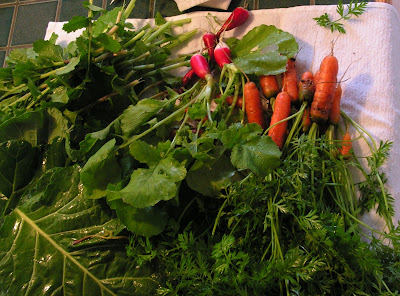- Beckyblue
- Bluegem
- Aliceblue
- Pearl River
- Gulfcoast
All these are rabbiteye blueberries, well-adapted to Central FLA climes, with very low chill-hour requirements (under 200). At least the Pearl River and Aliceblue are fairly difficult to come by -- they aren't appropriate for large-scale farming (they ripen over a long period, for instance), and have therefore fallen out of cultivation.
I am supposed to get two cuttings of blackberries that are Central-FLA approved sometime soon: Oklawaha and Flordagrand.
From what I've read, getting hardwood Bb cuttings rooted is tough, but I invested in some high-tech new-fangled (and VERY expensive!) rooting hormone, and I'll give it a shot. For the moment, I've got them in straight-up vermiculite, but I've read in my propagation book that I should do a 50-50 vermiculite/peat mix. The cuttings look as though they were made yesterday. They arrived in an overnight package. All for zero bucks. A great service from our government!
- Let's see... There's rumor that one can grow raspberries as an annual crop here in Central FLA: Just order the canes from up north, plant them in fall, and harvest in spring. The only other raspberry that does well in our zones (9a through 10a) is the Mysore raspberry (Rubus niveus), a tropical bramble. It's considered an invasive plant, but if you're living in a disturbed ecosystem (you are), then cultivating it in a home garden isn't a problem. What is a problem is finding it for sale.
- Here's how to order blueberry cuttings:
- Go to the list of available cultivars and decide which you'd like to order. In FLA, the main consideration is low chill requirements. (To find your chill hours here in FLA, see here.)
- Then read their distribution protocols and make your request here. Bear in mind that you have to request cuttings (or seeds , etc.) at particular times of the year. For instance, for the hardwood cuttings above, I made my request back in August for cuttings delivered in January (when the plants are dormant).







